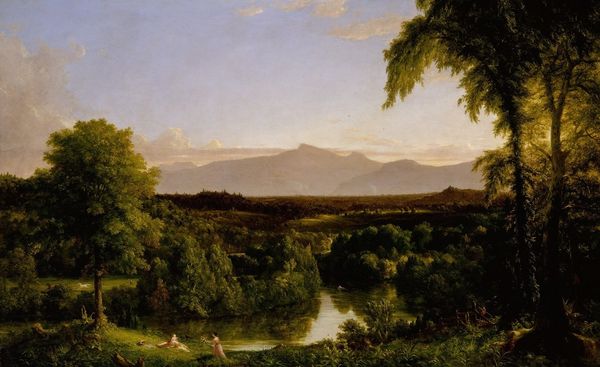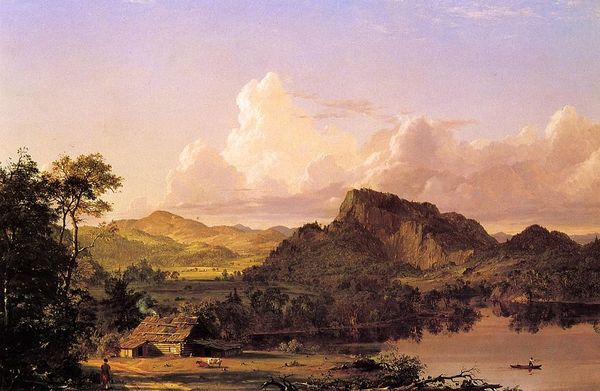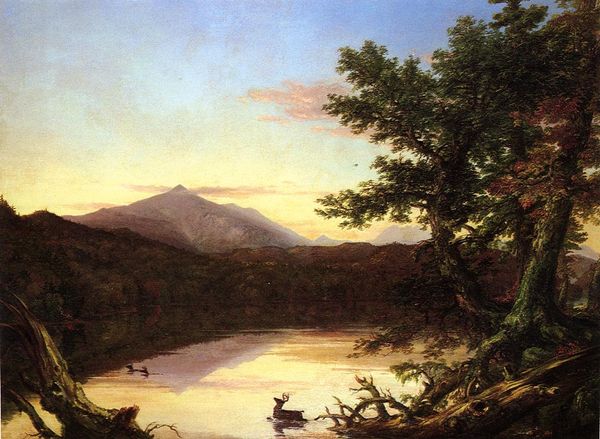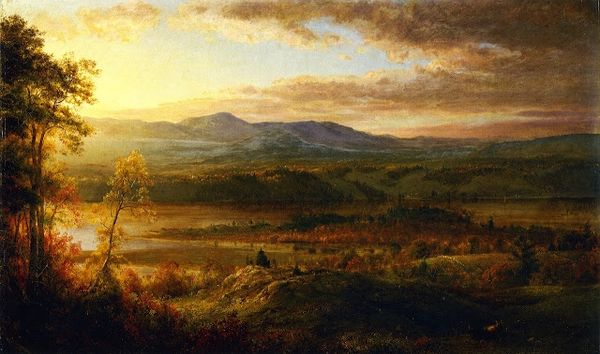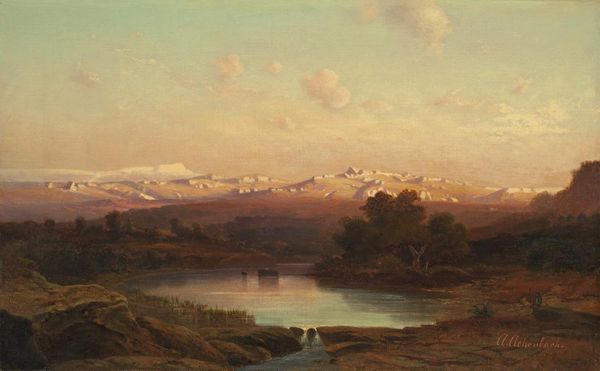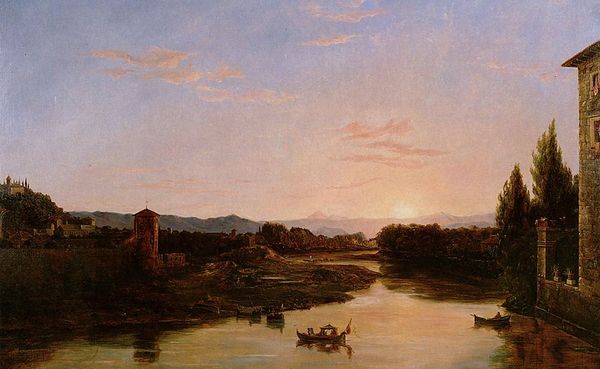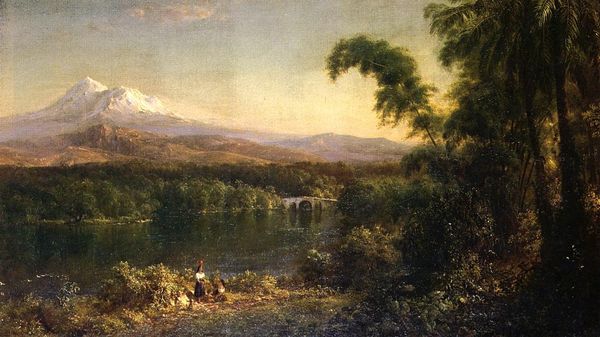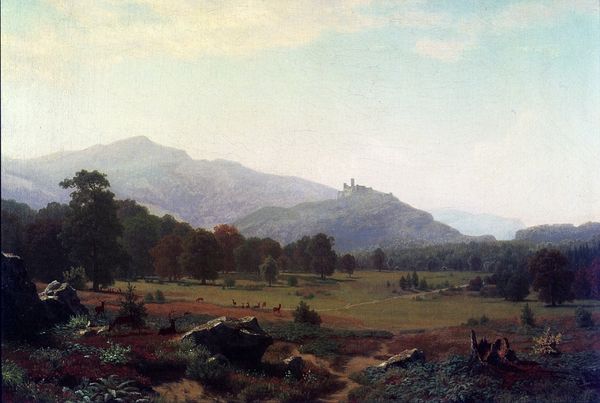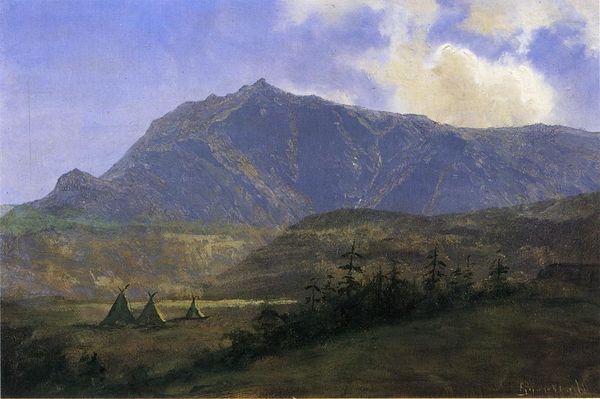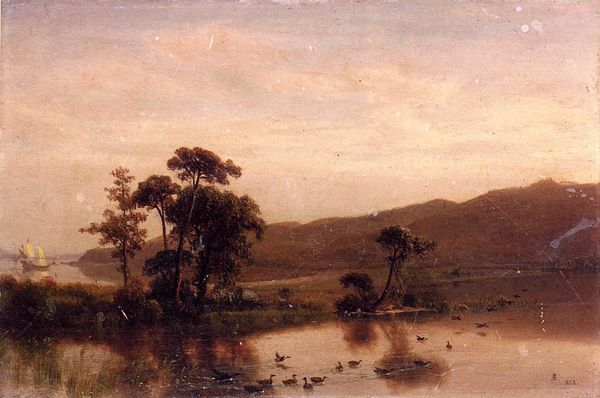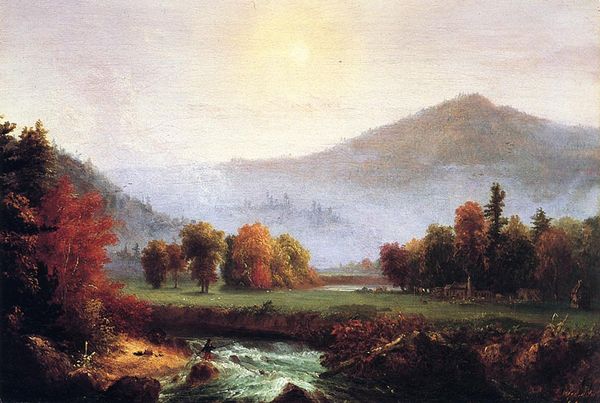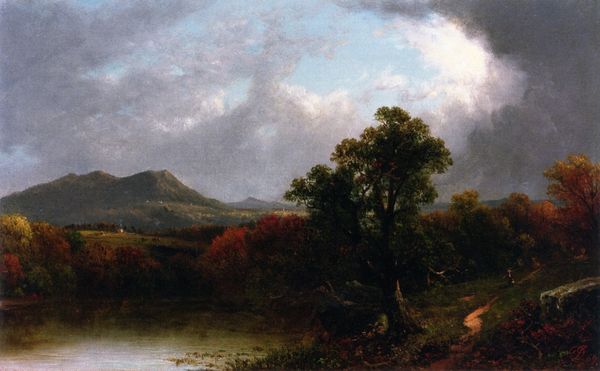
#
tree
#
sky
#
countryside
#
landscape
#
waterfall
#
river
#
impressionist landscape
#
possibly oil pastel
#
nature
#
oil painting
#
acrylic on canvas
#
forest
#
landscape photography
#
mountain
#
cloud
#
seascape
#
natural-landscape
#
coastline landscape
#
water
#
surrealist
Copyright: Public domain
Curator: We're standing before Thomas Cole's "River in the Catskills," completed in 1843. Cole, as many know, was a founder of the Hudson River School. Editor: It’s astonishing how effectively the composition cultivates a sense of tranquility and order, reflecting, I suppose, the very cultural values these landscapes were built to represent. Yet I find myself feeling a disquiet here—a subtle alienation. Curator: Interesting. Could you elaborate? I see a very self-assured depiction of an unspoiled Eden. Notice the strategic arrangement of light and shadow and the careful mirroring effect in the water. This creates a feeling of balance, an assurance. It harkens back to an idealized vision of the American landscape, a type of pre-industrial, pastoral ideal. Editor: But that is precisely my point. That “Eden” wasn't empty. These landscape paintings actively erase Indigenous presence, presenting a false narrative of pristine wilderness ripe for the taking. Look closer— isn't the lone figure by the river more of an intruder than a harmonious element? And the very act of capturing this landscape normalizes colonial entitlement to land, justified, of course, by manifest destiny and racial supremacy. Curator: I grant you the historical context is crucial, and any glorification of erasure is deeply problematic. But perhaps Cole’s image also operates on a deeper symbolic level. The river itself, a recurrent motif in art history, might represent time, transition, and the ever-changing face of nature. Think of rivers as symbolic boundaries. Editor: Agreed, the river carries multiple significations. However, it simultaneously functions as an element in the larger theater of colonial conquest. Remember the Indian Removal Act just a few years before this piece was created? These paintings are pretty but they reflect an imperial worldview. Curator: I hear your reading of it. I find it difficult to see this kind of intentionality in this landscape from 1843; perhaps a yearning for something lost. Something prior. Editor: It is important to acknowledge the violence and dispossession embedded within them. If art truly is a mirror to society, it's vital to inspect what—and whom—that mirror chooses to reflect and equally important who and what it obscures.
Comments
No comments
Be the first to comment and join the conversation on the ultimate creative platform.

